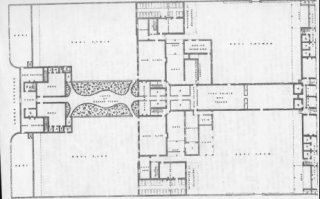By the end of June 1849 the Master reported that during the last eighteen months 3,265 paupers had received one night’s lodging with supper and breakfast: also that 946 people remained (with relieving officers’ tickets) for the last nine months in the probationary wards, awaiting admission by the Guardians on Board day. It was resolved at the meeting of
If the aim was to clear the workhouse of these categories, it failed. By
Things changed over the next – some say, the last Great Hunger – year.
[Christine Kinealy, acclaimed authority, Fellow of Liverpool University and author of This Great Calamity {Gill & Macmillan 1994} and Great Hunger in Ireland {Pluto, 1997}] begs to differ and argues the emergency continued to 1852 at least].
The Workhouse had fewer inmates in 1850 but more deaths and far more were sick.
|
1849 |
Inmates |
Sick |
Died |
1850 |
Inmates |
Sick |
Died |
|
8/9 |
854 |
42 |
4 |
7/9 |
595 |
63 |
4 |
|
15/9 |
836 |
39 |
5 |
14/9 |
599 |
61 |
2 |
|
22/9 |
812 |
32 |
2 |
21/9 |
595 |
55 |
2 |
|
29/9 |
803 |
25 |
1 |
28/9 |
574 |
66 |
4 |
|
6/10 |
811 |
28 |
2 |
6510 |
566 |
65 |
2 |
|
13/10 |
846 |
26 |
2 |
12/10 |
571 |
69 |
4 |
|
20/10 |
857 |
29 |
2 |
19/10 |
592 |
71 |
1 |
This was attributed to want of sufficient clothing and attention to cleanliness. The Master was directed to give shoes and stockings to all paupers and clothing of the thickest and warmest kind, not new.
In the paupers’ defence, Dr Davis explained they had not the means for washing themselves: however he did not wish to charge any officer with neglect.
It was incumbent upon him to remain on terms with the Guardians who employed him.
Part 6 is here …
